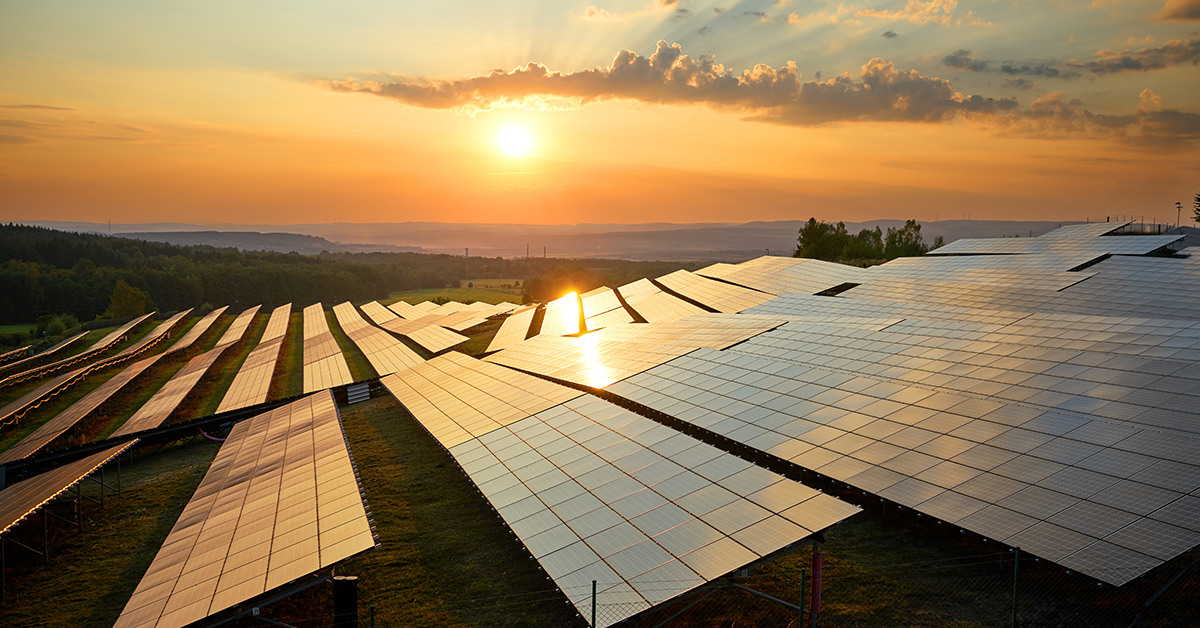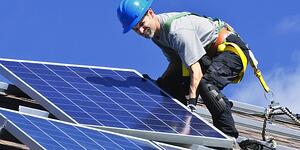Our 2025 Sustainability Report is here! Dive in.
The Demand for Clean Energy
July 6, 2020 •Chase Griswold

In 2019, renewable energy generation reached nearly 22 percent of US capacity, surpassing coal-fired plants’ share for the first time, and the rush to deploy battery storage at grid-scale and behind-the-meter surged as battery costs fell sharply. And while natural gas dominated the US power generation mix at over 44 percent of generation capacity, the US Energy Information Administration (EIA) predicted in January 2020 that generation from renewable sources will surpass natural gas by 2045. By all accounts, the nation had fast-tracked decarbonization efforts.
Then the pandemic hit, and the transition to clean energy took a back seat. From disrupted supply chains to paused procurement, halted production, and delayed projects, the double-digit increase of renewable energy production expected to take place in 2020 looks to have come to a halt. But it’s not all bad news. Renewable energy may have unexpectedly slowed in 2020, but it won’t be down for long. The demand for renewable energy is still up, and those clean energy goals are still in place.
Here is where things stand:
Energy Efficiency
 When we think of clean energy, renewable sources are most often what comes to mind. However, clean energy is not only energy derived from renewable, zero-emissions sources, but it also encompasses energy saved through energy efficiency measures. And energy efficiency in a pandemic environment continues to be the lowest-cost energy-saving measure available. In fact, with people across the world working from home in unprecedented numbers and uncertain economic times, residential customers are in need of energy efficiency opportunities now more than ever. While energy efficiency programs were hit hard due to shutdowns early on, with the establishment of safe work rules, and the influx of touchless programs, the request for efficiency programs is already starting to increase. As the importance of minimizing electricity costs take center stage for consumers across the country, the demand for energy efficiency will continue to rise. Now is the time to ensure your utility has cutting-edge energy efficiency programs available to meet the needs of your customers.
When we think of clean energy, renewable sources are most often what comes to mind. However, clean energy is not only energy derived from renewable, zero-emissions sources, but it also encompasses energy saved through energy efficiency measures. And energy efficiency in a pandemic environment continues to be the lowest-cost energy-saving measure available. In fact, with people across the world working from home in unprecedented numbers and uncertain economic times, residential customers are in need of energy efficiency opportunities now more than ever. While energy efficiency programs were hit hard due to shutdowns early on, with the establishment of safe work rules, and the influx of touchless programs, the request for efficiency programs is already starting to increase. As the importance of minimizing electricity costs take center stage for consumers across the country, the demand for energy efficiency will continue to rise. Now is the time to ensure your utility has cutting-edge energy efficiency programs available to meet the needs of your customers.
Solar Power
 Despite production delays and supply chain disruptions, the solar power market is still well-positioned. According to Renewable Energy World, 30.4 GW of new solar has already been contracted. Developers in the utility and commercial markets are locking in prices for future solar projects at low interest rates, with the expectation that solar projects will pick up again as early as this summer. This process is proof that the demand for renewables is still driving the market. In addition, according to the Solar Energy Industries Association (SEIA), the solar industry is working hard to establish a policy and market environment that will help create American jobs, stimulate the economy, build the next generation of America’s clean power plants, and create an inclusive and diverse workforce. Solar energy—and renewable sources in general—are still the future. With such a heavy reliance on the grid, the overall uncertainty brought on by the pandemic is likely to make homeowners even more apt to invest in solar once the immediate crisis has passed.
Despite production delays and supply chain disruptions, the solar power market is still well-positioned. According to Renewable Energy World, 30.4 GW of new solar has already been contracted. Developers in the utility and commercial markets are locking in prices for future solar projects at low interest rates, with the expectation that solar projects will pick up again as early as this summer. This process is proof that the demand for renewables is still driving the market. In addition, according to the Solar Energy Industries Association (SEIA), the solar industry is working hard to establish a policy and market environment that will help create American jobs, stimulate the economy, build the next generation of America’s clean power plants, and create an inclusive and diverse workforce. Solar energy—and renewable sources in general—are still the future. With such a heavy reliance on the grid, the overall uncertainty brought on by the pandemic is likely to make homeowners even more apt to invest in solar once the immediate crisis has passed.
Wind Power
 The pandemic has caused the oil market to collapse and coal power plants to be shut down due to high operating costs. The amount of coal used for electricity has dropped 40 percent in 2020. While oil, gas and coal spending are expected to continue on a downward trajectory through 2022, offshore wind spending has increased as countries strive to reach their 2030 renewable energy targets. China, Taiwan and Europe are leading the market, with the US soon to join when the first large-scale offshore wind plants are commissioned along the northeast coast. The Global Wind Energy Council (GWEC) predicts wind power is a key building block for economic recovery from the impact of COVID-19, enabling governments to renew critical infrastructure for a sustainable future. The wind industry will help to deliver the jobs, clean and affordable power, and energy security needed for a sustainable economic recovery. Like solar, wind power has been temporarily affected, but the impacts will be short-lived. Just last week, Siemens Gamesa announced their plan for the largest wind turbine in the industry—a 14-megawatt turbine that will be double the height of the Statue of Liberty.
The pandemic has caused the oil market to collapse and coal power plants to be shut down due to high operating costs. The amount of coal used for electricity has dropped 40 percent in 2020. While oil, gas and coal spending are expected to continue on a downward trajectory through 2022, offshore wind spending has increased as countries strive to reach their 2030 renewable energy targets. China, Taiwan and Europe are leading the market, with the US soon to join when the first large-scale offshore wind plants are commissioned along the northeast coast. The Global Wind Energy Council (GWEC) predicts wind power is a key building block for economic recovery from the impact of COVID-19, enabling governments to renew critical infrastructure for a sustainable future. The wind industry will help to deliver the jobs, clean and affordable power, and energy security needed for a sustainable economic recovery. Like solar, wind power has been temporarily affected, but the impacts will be short-lived. Just last week, Siemens Gamesa announced their plan for the largest wind turbine in the industry—a 14-megawatt turbine that will be double the height of the Statue of Liberty.
In hindsight, 2020 has not taken the path we anticipated for clean energy growth, or for any market for that matter. However, clean energy won’t see long-term negative impacts from the pandemic. Given the structural benefits renewable energy can bring in terms of economic development and job creation, as well as a worldwide push to transition to clean energy sources, the industry is well-positioned to help lead the country out of the current economic slump and beyond. To explore more on this topic and brainstorm ways your utility can get involved in this novel demand, schedule a meeting with one of our experts today.
SCHEDULE A MEETING

